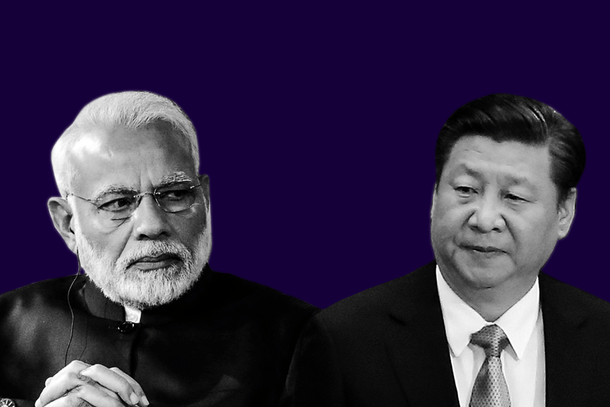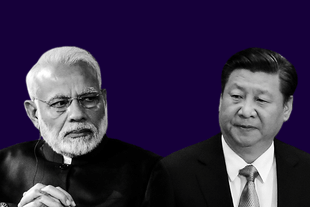World
Why Rating Agencies Seem Upbeat About Indian Economy And Concerned About Chinese
Pratim Ranjan Bose
Aug 17, 2022, 07:05 PM | Updated 07:04 PM IST
Save & read from anywhere!
Bookmark stories for easy access on any device or the Swarajya app.


India-China comparison, often unjustifiably so, has been a favourite of media commentators for the last three decades. Most of these commentaries were uncharitable to India. However, their number has surely declined over the last six months, and for a reason.
Last week, investment management and financial services company, Morgan Stanley, predicted that India would be the fastest growing economy in Asia in the financial year 2022-23, contributing over one-fifth of the world growth. The Indian economy, they said, was set for its “best run” in over a decade.
“We have been constructive on India’s outlook, both from a cyclical and structural perspective, for some time. The recent strong run of data increases our confidence that India is well positioned to deliver domestic demand alpha, which will be particularly important as developed market (DM) growth weakness percolates into Asia’s external demand,” a note said.
Domestic consumption key
Over the last few months, Delhi has been taking several initiatives – including export curbs on products and commodities - to check inflation and encourage domestic consumption, in the face of rising uncertainties in the global market. Morgan Stanley merely confirmed that it has started yielding results.
And, it did. The S&P Global India Manufacturing index increased to 56.4 in July 2022, beating market expectations of 53.8. Inflation eased to an 11-month low at 6.7 per cent. Overall employment numbers, a worldwide worry, improved marginally.
However, hiring has been growing at an extraordinary pace in IT, telecom, banking and financial, pharma etc. E-commerce penetration increased five-fold during covid. This hasn’t only increased the gig hiring; warehousing and logistics are also witnessing exponential growth.
The activities are not restricted to big cities. As of March 2022, half of India’s nearly 66,000 recognised start-ups were from non-metro cities, which are experiencing a real estate boom. Tier-II and tier-III cities like Raipur, Lucknow, Coimbatore etc, witnessed 15 per cent year-on-year growth in home prices last year.
The sentiments are reflected in the growth projections by different outfits. As of July, the International Monetary Fund (IMF) expects India to grow by 7.4 per cent in FY23; World Bank 7.5 per cent; Organisation for Economic Cooperation and Development (OECD) 6.9 per cent and; Asian Development Bank (ADB) by 7.2 per cent.
Of the top rating agencies, only Nomura (4.7 per cent) holds a conservative view. S&P Global predicted 7.3 per cent. Fitch Ratings pegged growth at 7.8 per cent in FY23 and an average of 7 per cent between FY24 and FY27.
It doesn’t mean everything is hunky dory in India. It should not be, in such a volatile global situation. However, rest assured things are distinctly brighter here than in China which is struggling to stabilise the boat.
After a dismal 0.4 per cent GDP growth in the June quarter (half-yearly growth 2.5 per cent), the official manufacturing purchasing managers’ Index (PMI) fell to 49.0 in July from 50.2 in June. PMI below 50 indicates contraction. The performance was below analysts’ expectations of 50.4.
Bleak outlook in China
Notably, Beijing withdrew covid-related restrictions in July and the Chinese Communist Party (CCP) mouthpiece, Global Times, predicted the country to report robust growth in the September quarter. The promise fell flat on its face.
According to a report by AP, on 10 August, CCP has “stopped talking” about this year’s 5.5 per cent GDP growth target as the country’s youth are facing a beak job market outlook.
The effort to establish political control over the internet economy has not gone down well. As against recruitment rush by digital economy players in India, Chinese tech conglomerate, Alibaba bid goodbye to 13,616 employees between January and June this year.
“The most educated generation in China’s history was supposed to blaze a trail towards a more innovative and technologically advanced economy. Instead, about 15 million (1.5 crore) young people are estimated to be jobless, and many are lowering their ambitions,” Time reported on 25 July 2022.
China’s overall unemployment numbers look a comfortable 5.5 per cent. Things, however, look abysmally bad for the young urbanites (16-24 years) where the unemployment is as high as 19.3 per cent.
To make it worse 11 million or 1.1 crore new graduates will join the workforce this summer. The widening demand-supply gap is bringing the salaries down for new recruits. Considering that the country witnessed a booming economy for decades, the aspirational impact is huge.
What is killing China is a huge debt crisis. Officially, President Xi Jinping wanted to avert this. But in the ultimate analysis, he failed miserably. According to JP Morgan, China’s household debt surged to 62 per cent of GDP last year from 28 per cent a decade before. Corporate debt is ruling at 160 per cent of GDP.
According to Trading Economics, a data aggregation platform, India's household debt stood at 37 per cent in December 2021, up from 34 per cent a decade ago but lower than the peak of 38.4 per cent. Motilal Oswal estimated the non-financial corporate debt at 48.6 per cent of GDP, the lowest in seven years.
As a trade surplus economy, China amassed huge wealth at the government level over the last three decades. But the high indebtedness of its households and corporates indicates a serious flaw in the system. Clearly, the boom was prolonged or inflated by over-leveraging the financial system.
And, that takes us to the core of the debt crisis that is now rocking China.
The boom was inflated
Over the last two decades, 70 per cent of household savings were directed to property, contributing to one-third of China’s gross domestic product (GDP). The $2.7 trillion property market is now in crisis, which is spilling over to other areas.
Home buyers in nearly 100 cities stopped paying their monthly instalments, against home loans in nearly 300 unfinished projects. Nomura had estimated that Chinese developers delivered only 60 per cent of homes they pre-sold between 2013 and 2020. The movement puts roughly 4 per cent of the total bank loans in China, at risk.
As against revival in housing demand in India, China is witnessing a sharp decline in sales. Nikkei Asia reported on 13 August 2022 that new housing sales shrank 27 per cent during the January-June period in China. July sales dropped by 13 per cent from June and 27 per cent year-on-year in 100 major cities. Home prices are falling.
According to S&P Global, around 20 per cent of developers are at risk of insolvency. This is reflected in rising bond defaults that have exceeded $20 billion so far this year, as against $9 billion in the full year of 2021. Property developers top the list of defaulters.
The topsy-turvy in the property market will have a trailing impact on the economy. According to available reports, the steel sector is already facing the heat with many smaller steel plants operating at a loss for months. Construction accounts for 55 per cent of steel demand in China.
“If timely and effective policy intervention does not materialise, distress in the property market will be prolonged and have effects on various sectors in China beyond the property sector’s immediate value chain,” Fitch warned last week.
The question is what kind of intervention China will plan. Beijing has already announced a stimulus for the infrastructure sector. It has the wherewithal to fork out more cash. But will they risk another round of overheating of the economy or will they give restructuring a chance?
Also Read: The World Is Watching China… Worriedly





